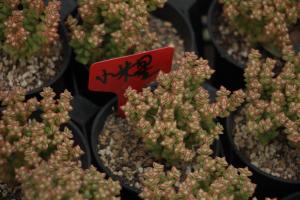How to Root Plant Stems in Water
Plant propagation is an exciting process, especially when you start it with your own plants. One of the ways to propagate plants is by rooting stem cuttings in water. It is a simple and effective method that can be done by anyone, even those who are new to gardening. In this article, we will guide you on how to root plant stems in water.
Preparing the Plant Stems
The first step to rooting plant stems in water is to select the right plant. Different plants have varying success rates when it comes to propagation by stem cuttings. You want to choose a healthy, disease-free plant that has vigorous new growth. Avoid taking stem cuttings from plants that are stressed or struggling.
Once you have the right plant, select a stem that is approximately 4-6 inches long and has several leaves. Use a sharp, clean pair of scissors or pruning shears to make a clean cut at a 45-degree angle. This allows for maximum water absorption and prevents rotting.
Rooting the Plant Stems in Water
After you have trimmed off the lower leaves, place the stem cutting in a clean glass container filled with lukewarm water. You want to make sure that the water level is high enough to cover the bottom nodes, but not too high to cover the remaining leaves. You can also use a rooting hormone to improve the success rate.
Place the glass container in a location that receives bright, indirect sunlight. You want to avoid direct sunlight as it may heat up the water and damage the stem. Make sure to change the water every few days, and avoid using chlorinated water as it can harm the cuttings. Also, keep an eye out for any signs of rot or molds which can develop in stagnant water.
Transferring the Rooted Plant Stem to Soil
After a few weeks, you should start to see roots forming at the bottom nodes of the stem cutting. Once the roots are a few inches long, it is time to transfer the cutting to soil. Use a well-draining potting mix and make a hole with a pencil to avoid disturbing the roots. Place the plant stem into the hole and gently backfill with soil
After planting, water the rooted cutting and place it in a location with bright, indirect sunlight. Keep the soil moist but not waterlogged, and avoid fertilizing the plant for the first few weeks. As the plant grows, you can gradually increase the amount of sunlight exposure and start fertilizing it with a balanced fertilizer.
Conclusion
Rooting plant stems in water is a fun and rewarding way of propagating your favorite plants. With a little patience and care, you can turn one plant into multiple plants, and enjoy the satisfaction of growing your own plants from scratch. Follow these simple steps, and you'll be on your way to a thriving garden in no time!

 how many times do yo...
how many times do yo... how many planted tre...
how many planted tre... how many pine trees ...
how many pine trees ... how many pecan trees...
how many pecan trees... how many plants comp...
how many plants comp... how many plants can ...
how many plants can ... how many plants and ...
how many plants and ... how many pepper plan...
how many pepper plan...





























